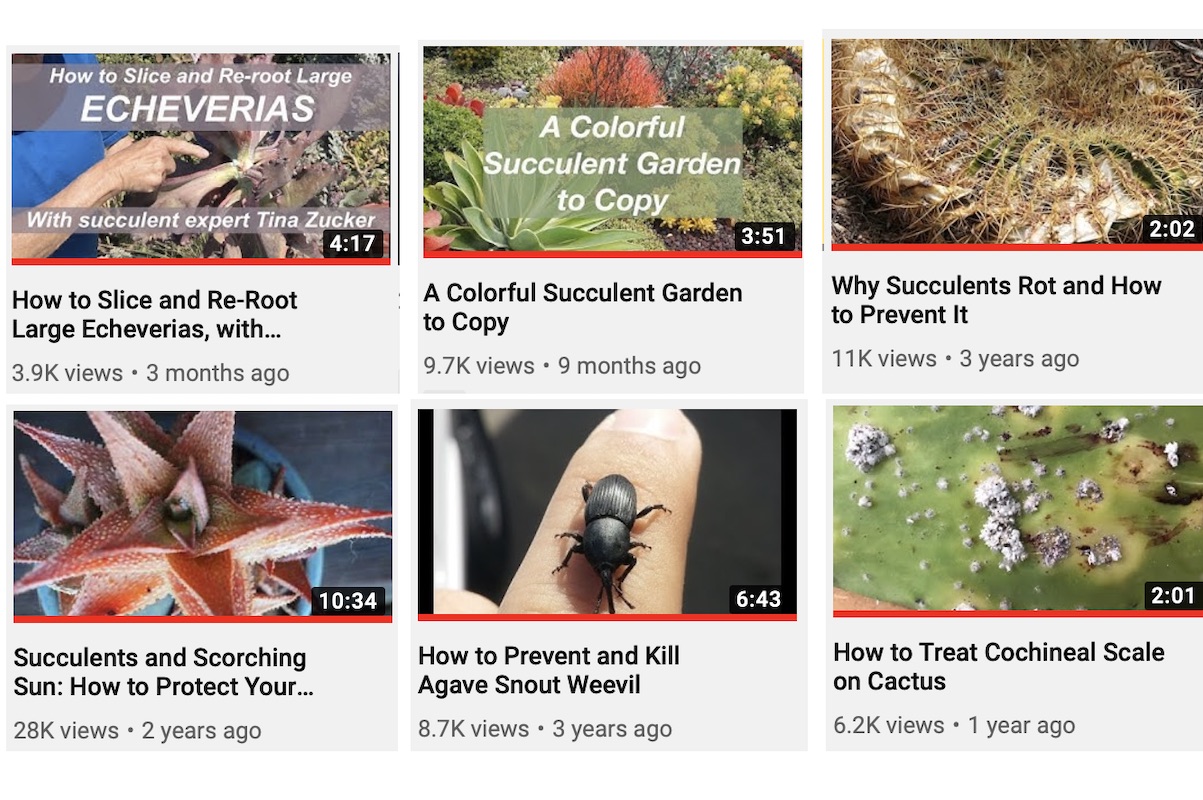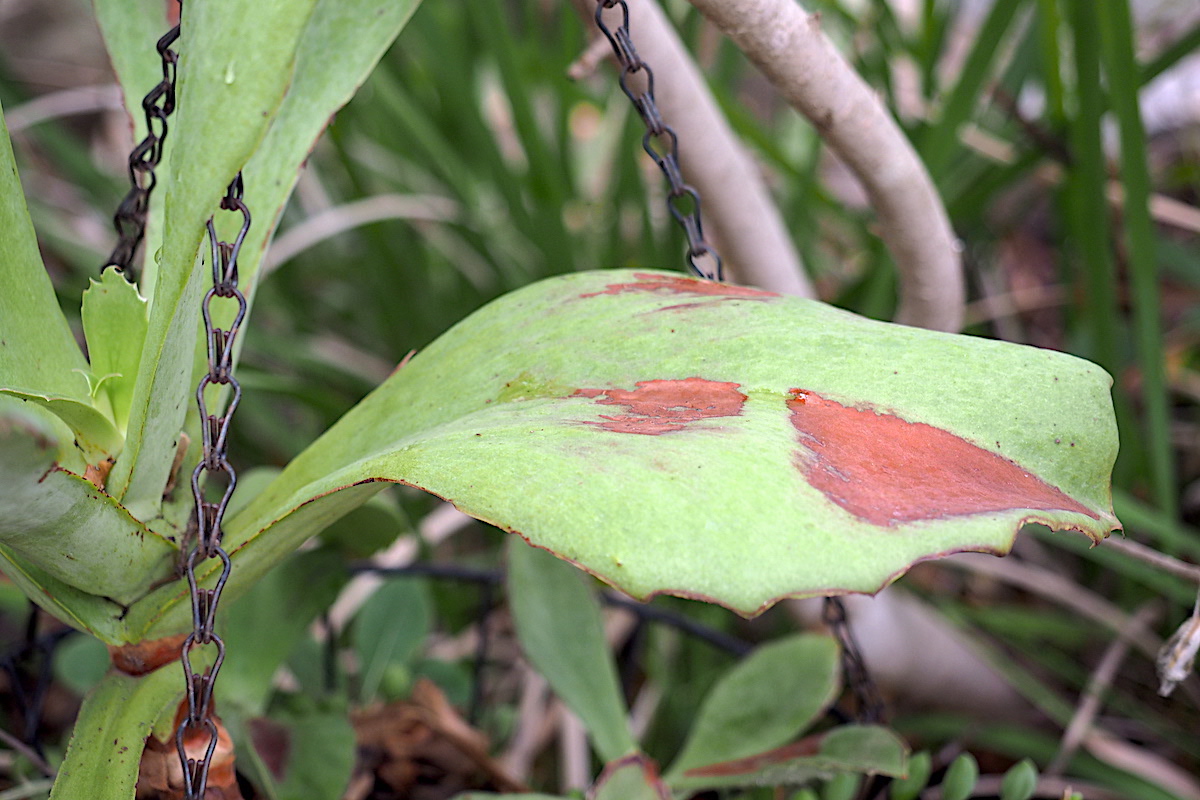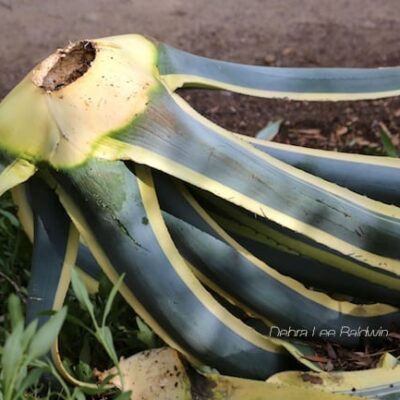Succulent garden maintenance can be infrequent, but nonetheless it's essential. As the seasons change, evaluate your succulents for adequate sun, good air circulation, fast-draining soil and regular but not excessive water. Keep the plants weed- and pest-free. Review my Succulent Care Basics, and on my YouTube channel, watch How to Refresh an Overgrown Succulent Garden (4:48)
Overwhelmed? Get Hands-On Help
If you can't do it yourself, hire a professional skilled at succulent garden maintenance. They'll prune excess growth, remove weeds and debris, plant gaps, and check irrigation. They'll also suggest ways to save you time and money, and point out potential long-term problems.

Help me connect people and make this page a great resource!
Succulent Garden Maintenance Tasks
To keep your succulent garden looking good:
1. Trim damaged or excessive growth
Prune succulents to show the beauty of the plants and keep them tidy. Use cuttings to fill gaps. Remove frost-damaged leaves on jade and other tender succulents. Cut damaged tips of aloes and agaves to a point that follows the natural shape of the leaf. Deadhead spent flowers.
2. Repot overgrown containers
Indicators that succulents have outgrown their containers include roots emerging from drain holes, a plant that looks overly large for its pot, and stems that are tangled and rangy. See my book Designing with Succulents for how big a particular plant will get. If it has potential to get large, and the climate is suitable, plant it in the garden. On my YouTube channel see: How to Refresh an Overgrown Succulent Container Garden (4:31).
3. Fertilize

Above: These are just six of the 100+ helpful videos on my YouTube channel.
4. Evaluate plant placement
Notice which succulents suffer from winter cold, and move them to a better, more sheltered location. A few feet can make a big difference. Plants closest to hardscape, boulders and structures benefit from radiated warmth. Those beneath overhanging branches or eaves are safer than those out in the open. Your home's south side is warmer than its north. And because cold air is heavier than warm, succulents at the top of a slope are less vulnerable than those below. Plan for the other extreme, too: Succulents (especially young or newly planted ones) can be scorched by sun.

Sunburned kalanchoe leaf
5. How's the light?
6. Control Pests
7. Start cuttings
8. Get rid of weeds.
Your turn!
Do you have someone skilled in succulent garden maintenance whom you've worked with and like? Kindly leave a recommendation in the comments below. Include the person's name, contact info, website if any, your city or region, and anything else that might be helpful. And if you provide this service yourself, please let us know!
Disclaimer: Recommendations in comments on my website should not imply I'm endorsing any person or business, nor for that matter that I know anything about them. I take no responsibility for the information provided. -- Debra Lee Baldwin
Uh-oh, Is My Succulent Sick?
Succulent Plant Pests, Diseases and Other Problems Keep your succulents looking their best When a succulent isn’t looking quite right, you may wonder if you’ve done something wrong. Here’s what to look for: symptoms, causes, severity, prevention, and treatments for common succulent pests and problems. ‘Sunburst’ aeonium showing abrasion bruises Abrasion Not Serious but unsightly.…
The post Succulent Garden Maintenance & Hands-On Help appeared first on Debra Lee Baldwin. Copyright © Debra Lee Baldwin.
from Debra Lee Baldwin https://ift.tt/2TjNwVw
via IFTTT


No hay comentarios:
Publicar un comentario